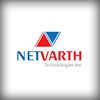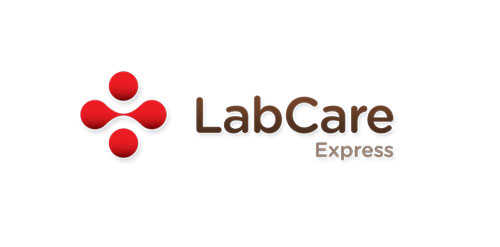Description

FP-LIMS

NetLIMS (laboratory management software)
Comprehensive Overview: FP-LIMS vs NetLIMS (laboratory management software)
FP-LIMS and NetLIMS are both laboratory information management systems (LIMS) designed to streamline and automate laboratory operations. They cater to different markets and have unique features tailored to their target audiences. Let's dive into a comprehensive overview of each:
a) Primary Functions and Target Markets
FP-LIMS:
-
Primary Functions:
- Data Management: Handles large volumes of laboratory data efficiently.
- Quality Control: Provides tools for quality assurance and compliance with regulatory standards.
- Workflow Automation: Automates routine laboratory workflows and processes.
- Reporting and Analysis: Generates detailed reports and data analysis for decision-making.
- Integration Capabilities: Compatible with various laboratory instruments and external systems.
-
Target Markets:
- Primarily aimed at industries like metals, automotive, petrochemical, electronics, and other manufacturing sectors.
- Suitable for quality control laboratories requiring precise and reliable metrics.
NetLIMS:
-
Primary Functions:
- Sample Tracking: Comprehensive sample management and tracking.
- Test and Result Management: Manages test scheduling, results entry, and validation.
- Compliance and Regulatory Support: Ensures compliance with industry standards like ISO, CLIA, and others.
- Workflow Optimization: Streamlines laboratory processes to enhance productivity.
- Client and Inventory Management: Handles client datasets and laboratory inventory needs.
-
Target Markets:
- Medical and healthcare laboratories, environmental testing labs, and research institutions.
- Designed for labs needing comprehensive compliance and regulatory features.
b) Market Share and User Base
-
FP-LIMS:
- As part of a more niche market focusing on certain high-tech industries, FP-LIMS might not possess a dominant market share globally but holds significant traction within its targeted sectors.
- Its user base is comprised of industry-specific laboratories needing detailed, high-quality LIMS solutions.
-
NetLIMS:
- NetLIMS often serves a broader range of medical and research labs, which might allow it to capture a more diverse market segment.
- Its user base tends to be larger in the healthcare and biotechnology domains, benefitting from adherence to medical industry standards.
c) Key Differentiating Factors
-
Industry Focus and Application:
- FP-LIMS: More tailored towards industrial laboratories with a focus on sectors like automotive and manufacturing. Its strength lies in handling specialized data and quality management.
- NetLIMS: Designed for medical and research laboratories with strong features for regulatory compliance and efficient sample management.
-
Compliance and Regulatory Features:
- FP-LIMS offers industry-specific compliance tools, especially suited for manufacturing standards.
- NetLIMS provides comprehensive features for medical and environmental compliance, which are essential for healthcare labs.
-
Technology and Integration:
- FP-LIMS prides itself on integration capabilities with industrial laboratory equipment and focuses heavily on data integrity and precision.
- NetLIMS often emphasizes its connectivity with healthcare systems like Electronic Medical Records (EMR) and its adaptability to varied laboratory environments.
-
Customization and Flexibility:
- Both systems offer customization, but their flexibility might differ based on the industry. FP-LIMS might provide customization that supports intricate industrial processes, whereas NetLIMS offers adaptability crucial for hospitals and research facilities.
In conclusion, both FP-LIMS and NetLIMS serve distinct markets with specific needs. FP-LIMS is well-suited for industrial labs focusing on quality and process integration, while NetLIMS is ideal for medical and research labs prioritizing compliance and sample management. Their market presence and user base reflect their efficacy in serving these specialized sectors.
Contact Info

Year founded :
Not Available
Not Available
Not Available
Not Available
Not Available

Year founded :
Not Available
Not Available
Not Available
Not Available
Not Available
Feature Similarity Breakdown: FP-LIMS, NetLIMS (laboratory management software)
When comparing FP-LIMS and NetLIMS, both widely used laboratory information management systems (LIMS), it's essential to examine their core features, user interfaces, and unique functionalities. Here’s a breakdown:
a) Core Features in Common: Both FP-LIMS and NetLIMS offer several core features typical of laboratory management software, including:
- Sample Management: Efficient tracking and management of samples throughout their lifecycle, from collection to analysis and storage.
- Data Reporting: Comprehensive reporting tools to generate standardized and customizable reports.
- Regulatory Compliance: Adherence to industry standards and regulations such as ISO, GLP, and FDA to ensure data integrity and quality control.
- Integration Capabilities: Ability to integrate with various laboratory instruments, enterprise systems, and databases to streamline workflows.
- Inventory Management: Tracking of lab inventory including reagents, consumables, and equipment.
- Workflow Automation: Tools to automate routine tasks and processes, improving efficiency and reducing human error.
- User Access Controls: Secure access management and role-based permissions to protect sensitive data.
b) User Interfaces Comparison:
-
FP-LIMS: Known for its user-friendly and customizable interface, FP-LIMS tends to offer a more modern and intuitive design. It is designed to accommodate a range of user skills, providing dashboards, drag-and-drop functionalities, and mobile responsiveness.
-
NetLIMS: Typically emphasizes robust functionality over aesthetics; it may have a more utilitarian interface. The focus is usually on providing detailed and comprehensive tools, which might require a steeper learning curve compared to FP-LIMS.
c) Unique Features:
-
FP-LIMS Unique Features:
- Adaptability: FP-LIMS prides itself on its highly configurable nature, allowing customization to fit specific industry needs, which is particularly beneficial for laboratories dealing with diverse types of analyses.
- Multi-Sector Suitability: It offers more flexibility across different sectors like manufacturing, healthcare, and environmental sciences.
-
NetLIMS Unique Features:
- Cloud-Based Options: NetLIMS often emphasizes cloud deployment options, enabling remote access and collaboration.
- Comprehensive Data Management: Advanced data analysis tools tailored for specific scientific research applications, especially in extensive laboratory networks.
- Patient Data Handling: NetLIMS often incorporates modules for managing patient data, which is beneficial in medical and healthcare settings.
Ultimately, the choice between FP-LIMS and NetLIMS depends on the specific needs and priorities of the laboratory, such as the importance of user experience, the breadth of customization required, and the need for particular industry-specific features.
Features

Data Management
Reporting and Compliance
Workflow Automation
Sample Management
User Interface and Accessibility

Sample Management
Test Management
Data Management
User Management
Reporting
Best Fit Use Cases: FP-LIMS, NetLIMS (laboratory management software)
FP-LIMS and NetLIMS are both laboratory management software solutions designed to cater to different laboratory needs, offering various functionalities that make them suitable for specific use cases. Here's how each stacks up regarding the best fit use cases:
a) FP-LIMS
Types of Businesses or Projects:
-
Manufacturing and Industrial Laboratories: FP-LIMS is particularly suited for manufacturing sectors that require stringent quality control and testing, such as automotive, aerospace, and electronics. Its robust data management helps in maintaining compliance and ensuring product quality.
-
Chemical and Material Testing: Companies that rely on intensive chemical analysis and materials testing can benefit from the software's ability to handle complex datasets and integrate with various testing equipment.
-
Environmental and Life Sciences: Laboratories involved in environmental testing, such as water and soil analysis, can leverage FP-LIMS for its capability to manage vast amounts of data and generate regulatory compliance reports.
-
Food and Beverage Quality Assurance: FP-LIMS is also ideal for food and beverage companies requiring rigorous quality checks to ensure safety and compliance with food safety regulations.
Scenarios:
- Organizations needing robust integration with laboratory instruments and devices.
- Labs that require detailed audit trails and compliance with regulatory standards.
- Multi-site laboratories needing centralized data management and analysis.
b) NetLIMS (Laboratory Management Software)
Types of Businesses or Projects:
-
Clinical and Pathology Laboratories: NetLIMS is designed for clinical settings to streamline operations, improve patient data management, and ensure compliance with healthcare regulations.
-
Biotech and Pharmaceutical Research: This software offers features that are crucial for managing clinical trials, drug development processes, and research data integrity.
-
Hospital and Diagnostic Centers: Organizations focused on patient diagnostics can use NetLIMS for efficient sample tracking, results management, and reporting to enhance patient care.
-
Public Health Institutions: These institutions can benefit from NetLIMS due to its capability to handle high volumes of tests, integrate with various healthcare systems, and support public health initiatives.
Scenarios:
- Facilities requiring integration with hospital information systems (HIS) and electronic medical records (EMR).
- Labs focused on improving turnaround times and operational efficiency.
- Organizations needing compliance with healthcare standards like CAP, CLIA, and HIPAA.
d) Catering to Different Industry Verticals or Company Sizes
FP-LIMS:
- Industry Verticals: Primarily manufacturing, environmental sciences, and food safety. It can adapt to industries with intensive testing and compliance needs.
- Company Sizes: It suits medium to large companies due to its comprehensive features and ability to manage large data sets. Small companies might find it more software than necessary unless they operate in highly regulated sectors.
NetLIMS:
- Industry Verticals: Healthcare, clinical research, biotechnology, and pharmaceutical sectors. It's tailored for environments where patient data and regulatory compliance are critical.
- Company Sizes: Well-suited for hospitals, diagnostic labs, and research centers of all sizes, particularly where integration with other healthcare systems is essential. Smaller labs focusing on patient diagnostics or research can also leverage its features for enhanced efficiency.
Both FP-LIMS and NetLIMS offer scalable solutions that can be tailored to the specific needs of various industries, but their core functionalities make them better suited for different sectors. FP-LIMS excels in industrial and quality assurance settings, while NetLIMS is optimized for healthcare and clinical environments.
Pricing

Pricing Not Available

Pricing Not Available
Metrics History
Metrics History
Comparing undefined across companies
Conclusion & Final Verdict: FP-LIMS vs NetLIMS (laboratory management software)
To provide a conclusion and final verdict for FP-LIMS and NetLIMS, both laboratory management software products, we'll assess their overall value, list their pros and cons, and offer recommendations for potential users.
Conclusion and Final Verdict:
a) Best Overall Value:
Determining which product offers the best overall value between FP-LIMS and NetLIMS depends on specific organizational needs and priorities. Generally, if an organization values robust customization and flexibility, FP-LIMS might offer better value. On the other hand, if seamless integration and user-friendliness are prioritized, NetLIMS might be more valuable.
b) Pros and Cons:
FP-LIMS:
Pros:
- Customization: FP-LIMS offers extensive customization options, allowing labs to tailor the software to fit unique workflows and requirements.
- Flexibility: It supports a wide range of laboratory processes and industries, providing flexibility in adapting to different verticals.
- Data Management: Provides comprehensive data management and reporting features, essential for compliance and analytics.
Cons:
- Complexity: The level of customization can lead to complexity in implementation and may require more time and resources.
- User Experience: The interface may not be as intuitive as some of its counterparts, potentially necessitating more training for users.
- Cost: Customization and flexibility might come with higher initial setup costs.
NetLIMS:
Pros:
- User-Friendly Interface: Known for its straightforward and intuitive user interface, which can reduce training time.
- Integration: Offers seamless integration with existing systems, making it easier to incorporate into the current IT infrastructure.
- Customer Support: Strong customer support to assist during implementation and ongoing use.
Cons:
- Limited Customization: Compared to FP-LIMS, it may offer less flexibility in terms of customizing workflows.
- Functionality: Might not offer as in-depth functionality for specialized lab processes as some competitors.
- Scalability: Depending on the version, scalability might be limited for very large laboratory operations.
c) Recommendations:
- Evaluate Needs: Users should begin by conducting a thorough assessment of their lab's specific needs, including the size of the laboratory, required functionalities, and the importance of integration with other systems.
- Demonstrations and Trials: Request demos or trial versions of both FP-LIMS and NetLIMS to experience firsthand their interfaces, ease of use, and capabilities.
- Total Cost of Ownership: Consider not just the upfront costs but also the long-term costs associated with training, support, and potential need for custom development.
- Consultation with Stakeholders: Engage with key stakeholders, including IT, compliance officers, and end-users, to gather diverse perspectives on what would work best for the organization.
- Future Growth: Consider the future scalability and potential growth of the lab. Choose a system that can accommodate future requirements without significant overhauls.
In conclusion, both FP-LIMS and NetLIMS have distinct advantages and potential drawbacks. The best choice will depend on specific laboratory needs, existing infrastructure, and long-term strategic goals. Careful evaluation of these factors will guide users in making an informed decision.
Add to compare
Add similar companies




